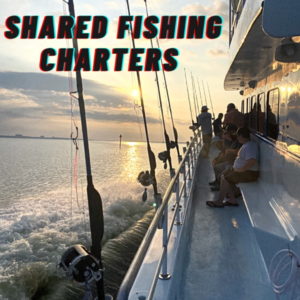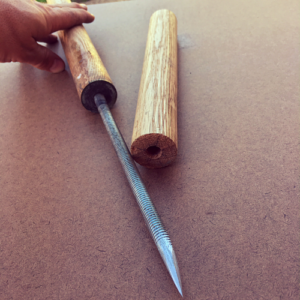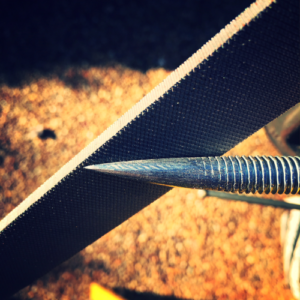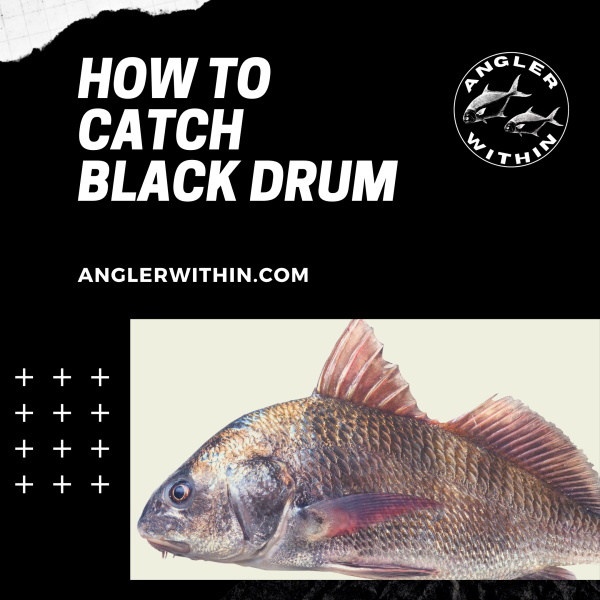
Black drum are a bottom feeding fish that absolutely loves crustaceans and mollusks. They can be caught by dropping blue crabs, shrimp or clams around pier or bridge pilings, next to jetties, or by soaking the same baits in the surf. The best time of year to target them is during their spring spawn. Beware when fishing around structure, as you’ll need heavy equipment to pull them out, without first breaking off.
Basic Information
(Pogonias cromis)
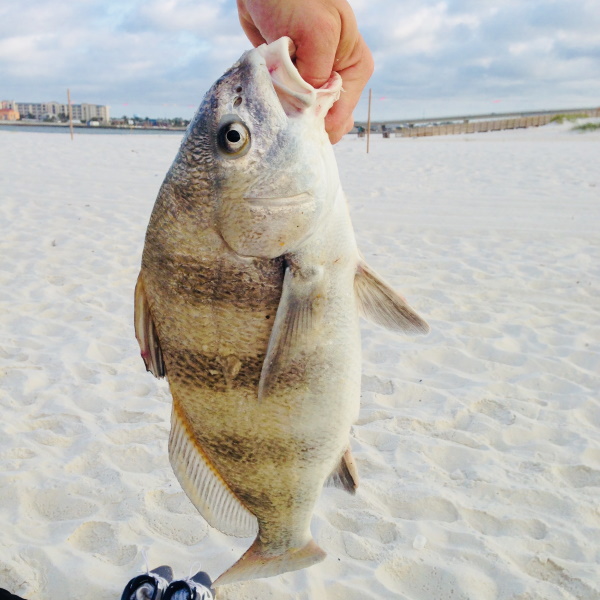
Smaller drum, such as the one pictured above, are often referred to as puppy drum. These smaller fish are actually quite good to eat. However, it’s the larger “big uglies” that most anglers are usually interested in catching.
Much like redfish, black drum are another species that provides a shore angler with a great chance at a huge fish. Fish weighing over 40 pounds are very common.
Drumming
Black drum are a member of the croaker family of fish, which includes red drum, spotted seatrout, and of course Atlantic croaker. They get their name from the drumming, or croaking, sound that they make, which is supposedly for attracting mates.
Both males and females can drum, which is different than red drum
Black Drum Are A Schooling Fish
During the annual spawning “run”, big drum group up into large schools in the springtime. If you happen upon a school, it’s likely that you can catch multiple fish, potentially many, off that school as long as you don’t spook them away. Smaller drum school together at times as well
Black Drum vs Sheepshead

Juveniles resemble Sheepshead in their coloration and general shape. However, the dark sheepshead-like bars of a black drum will fade with age, and eventually disappear on larger fish.
You can differentiate juvenile black drum from sheepshead by checking for chin barbels. Sheepshead do not have these very obvious “whiskers”, as shown above.
Juvenile drum can be differentiated from sheepshead by the “whiskers” on their chin.
What They Eat
Black drum use their sense of smell and feel, aided by their chin barbels, to root along the bottom in search of desirable foods. They eat mainly crustaceans and mollusks, to include blue crabs, fiddler crabs, hermit crabs, shrimp, oysters, mussels, and clams, among others.
How Big Do Black Drum Get?
They are the largest member of the drum family, and can attain weights in excess of 100 pounds. They live up to 60 years of age, and 50 pounds is not uncommon.
The world record black drum is 113 pounds. An even larger fish was supposedly caught in South Carolina recently, but they were not allowed to keep, and thus officially weigh, that over-slot fish.
Where To Find Them
Black drum range from Texas, throughout the Gulf, around Florida and up to New Jersey and beyond.
They love hanging around jetties, piers, bridge pilings, seawalls, and especially oyster reefs. Any of these types of structure in bays, rivers, creeks, inlets, passes or beaches will draw black drum.
They don’t tend to shy away from current, so you may have to use a heavy sinker when fishing some of their traditional haunts.
Relatively deeper water is most often better than shallow water, but they can be found cruising the shallows as well. Black drum are actually quite versatile in the waters that they can inhabit. They can be found in both clear and murky water, as well as in both salt and brackish waters. Besides the nearshore and inshore structures mentioned above, they can also be caught off of beaches, grass flats, and offshore.
Catch Black Drum On The Beach
Large drum frequent the surf zone in the colder months of the year, and provide good opportunities when many other species are not around.
When fishing for black drum on the beach, cast a smelly bait, such as a cut crab, into the deeper guts between the sandbars, and let it soak. You will still need to occasionally check your bait to verify it hasn’t been completely cleaned by bait stealers. Use a fish finder rig with a pyramid sinker to hold bottom in the waves.
As with anything you catch on the beach, particularly a large fish, use the waves to assist in surfing the fish onto the sand.
Around Inshore Structure Such As Docks
As mentioned, black drum are often found hanging around inshore structures such as docks, jetties, piers and seawalls. They are there feeding on crabs, oysters, shrimp, and other such hard shelled offerings found around these locations.
When fishing around structure, cast up current and allow the bait to be carried to where you expect the fish to be.
Let your bait go all the way to the bottom, as that’s where you’ll find them hunting for food.
Sight Fishing Black Drum In The Shallows
You’ll often see them tailing in shallow water. From a distance, they can be confused with tailing reds. They can be very spooky when they are in the shallows, so stealth is key.
When sight fishing shallow areas, toss a shrimp or piece of crab out in front of where they are headed and let them come upon it. Don’t put the bait right on a visible fish, or you risk scaring it off.
Black drum exhibit a similar tailing action as a red drum in shallow water. They root around along the bottom in search of food, and the aftermath can look like dark craters on the bottom.
Best Times To Target Them
Much like any species, the best time to fish for black drum is ahead of, and during their annual spawn. Peak times are difficult to nail down, as it’s different for each region, and even within specific locations within a region. Generally speaking, spring is the best time for a chance at large drum. This is different from their red drum cousins, who prefer to spawn in the fall.
Ahead of the spawn, mature black drum group up in big schools, and this is when you’re likely to encounter them in numbers.
Although spring is best, there are many locations where you can catch them year round. In fact, when many fish have disappeared in winter, the black drum bite can serve as a reliable fallback plan.
The best fishing for black drum seems to be in the afternoons, and even at night. You can catch them early in the day, but that isn’t normally prime time for the brutes.
Best Rigs For Black Drum
A Carolina, aka fish finder rig, is a great rig option, as is a knocker rig. Use a circle hook sized to the drum you are after. You’ll want to use a larger bait if you’re specifically targeting big uglies, and a bigger bait requires a larger hook.
If there isn’t much current, and you don’t need to cast very far, you could also use a circle hook with a split shot, or a jig head.
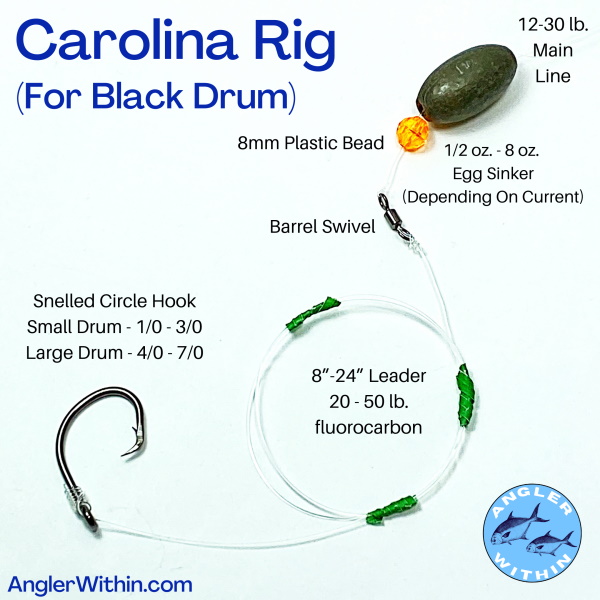
Hooks
Circle hooks are preferred, as they set quite nicely in the fleshy mouth of a drum, and they minimize gut hooking. 1/0 to 3/0 is a good size for smaller eating sized drum, whereas 4/0 to 7/0 is more fitting for oversized drum, since you will be using larger baits.
Sinkers
When fishing around pilings and other inshore structure, use egg sinkers heavy enough to get your bait to the bottom. An egg sinker can tumble around on the bottom, and drift with the current to where you want your bait to be.
Fishing from the beach calls for a different tactic. You’ll want to pin your bait to the bottom with a 2-6 oz. pyramid sinker. Don’t worry, drum will smell your bait, and seek it out as they move down the beach.
Leader Material
When it comes to smaller eating sized drum, 12-36″ of 20 pound fluorocarbon leader is a great option. For larger ones, 40 pound fluorocarbon is the better choice.
Fluorocarbon is more abrasion resistant than mono, and will hold up better around structures where the big uglies live.
Black drum are not particularly line or leader shy, and are in fact less finicky overall than redfish.
Pretty much any rig used for bull reds will work for black drum. If you would like to know more about other good rigs, check out my article about that here – Best Rigs For Bull Reds
Best Baits For Black Drum
Black drum are equipped with crushing teeth that allow them to pulverize hard shelled baits. Therefore crustaceans and shellfish are tops on a big ugly’s preferred menu. Blue crabs, in particular, are widely considered to be the best bait for black drum. Other excellent baits are fiddler crabs, live or dead shrimp, sand Fleas and clams.
Blue Crab
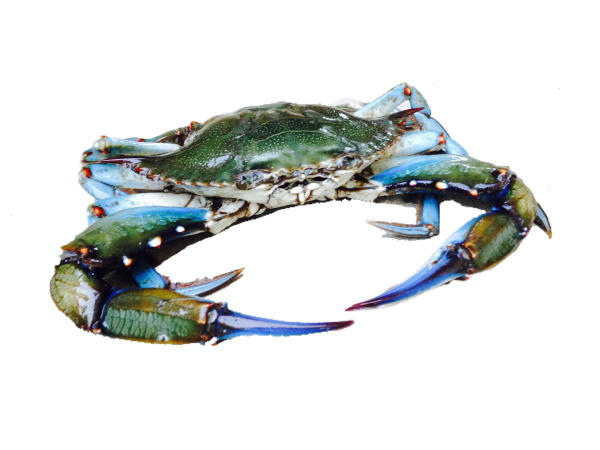
Just like redfish, one of their favorite baits is a blue crab. The difference is that a red drum has a much larger mouth, so you will oftentimes need to downsize a blue crab, whereas you can go bigger with reds.
Cutting a blue crab in half, or even quarters, releases tons of drum-attracting scent in the water, and provides a bait perfectly sized for a big drum’s mouth.
Crabs are not only desirable to the drum, they also ward off some of the bait stealers likely to inhabit black drum hideouts. So, crab is much preferred over shrimp much of the year. Winter might be the exception, as you won’t have as much little fish competition in wintertime.
To rig them, cut crabs in half, remove the legs, and pop the top shell off by prying on the corner. Stick your hook through one of the swimmer leg sockets, and out the shell of the crab. For smaller fish, cut the crab into quarters.
Shrimp
Both live and dead shrimp, either whole, or in pieces, will work for black drum. Shrimp is a great bait, but the problem is that everything likes shrimp. Therefore, it’s often difficult to keep other species off the line when you’re specifically targeting drum.
Other Options
Some other good baits are clams, fiddler crabs, sand fleas, and even pieces of cut mullet.
Best Rod And Reel For Black Drum
Rods
When fishing inshore, a 6.5 to 8 foot medium heavy rod is a great setup. However, if targeting drum from the beach, I prefer to use longer rods so that I can cast a bait out further. You’ll want to be able to reach the guts off the beach. That might require a pretty lengthy cast, depending on where you’re fishing.
Reels
Line capacity isn’t so important, unless you are beach fishing and need to cast a great distance. Drag is more important than line capacity when you need to pull a bridge monster away from underwater structure. The good all purpose 4000-5000 sized reel is usually also a great choice for black drum. Spool your reel with 150 yards of 15-30 lb. braid, or 12-25 lb. monofilament.
Huge black drum should be released, as they are the breeders that keep the population going strong, and they are not great eating anyway.
Hooking And Landing Black Drum
The Bite
Black drum are not a hard striking fish. Instead, they will oftentimes mouth a bait before fully taking it. So, wait until they move off with your bait before reeling down hard on the fish.
They have a sort of rubbery mouth that takes a hookset, and holds it pretty well. There is no need to jerk-set a hook. Just use a circle hook, and reel down hard when they take the bait.
Although they are not known to be ferocious fighters, larger drum are quite strong, and can pull your line into structure very quickly. A strong rod and reel is helpful when fishing around such obstacles.
Are Black Drum Good To Eat?
Smaller ones are widely considered to be better eating than Redfish. However, the big ones are not very good. So, you’ll want to stick to those fish around 10 pounds or less for the dinner table.
Larger black drum often have worms throughout their flesh. While these parasites (spaghetti worms) look really, really nasty, they are totally fine to eat. You could even safely eat them raw. I’ll pass.
Conclusion
Although black drum are not considered ferocious fighters, they do get very large. A large one is sure fun to tug on, and the little ones are sure good to eat. Even though they aren’t a very sexy species, drum provide a great fishing opportunity that is often overlooked and underappreciated.
Good Luck!
Augustus Clay
If you enjoyed this article, you might also be interested in my breakdown on How To Catch Bull Reds.

